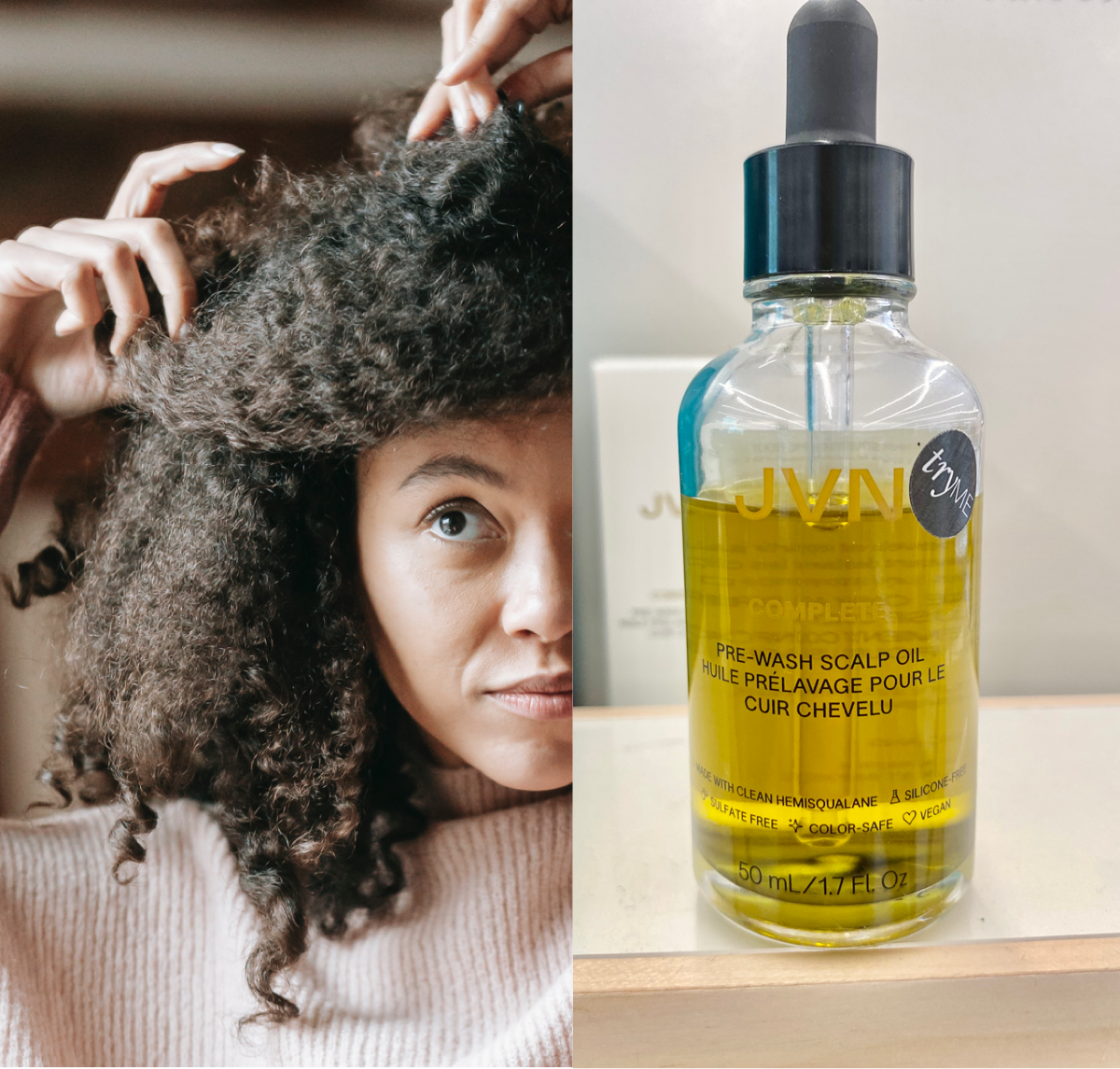Routine for a Dry Scalp (How to Get Rid of That Tight, Itchy Feeling)

If you buy through links on our site, we may earn an affiliate commission. As an Amazon Associate, I earn from qualifying purchases. This keeps it 100% reader-supported and free of advertisements or sponsorships. Thanks for your support!
Having a dry scalp can be uncomfortable. The feeling of a tight and itchy scalp is one thing, but having flaking on top of that can bring a whole other level of discomfort. And on top of that, having a dry scalp can actually make your hair look frizzy and dull.
The good news is that fixing a dry scalp is actually pretty simple, and changing around your routine can do a lot of good for turning your scalp around. With a few new steps, you can banish your dry scalp for good.
Why Your Scalp Feels Dry
There are several reasons why your scalp might feel dry, but some common causes are washing your hair too frequently, exposure to cold and dry weather conditions, overuse of heat styling tools as well as certain scalp conditions like seborrheic dermatitis or scalp psoriasis. Factors like stress, hormones, and allergens can also cause dryness and irritation on your scalp.
Whatever the cause, your scalp is dry because it is not producing enough oil (or sebum.) If your scalp isn’t producing enough oil, your scalp can start to feel dry and tight pretty fast.
While addressing the causes of any of these issues is sure to help with your dry scalp, some also are more prone to sensitivity or dryness on their scalp. Finding the right balance of moisture and cleansing will keep your scalp clean without drying it out.
How Often You Should Wash Your Hair If You Have a Dry Scalp
 It can be difficult to figure out the right washing schedule if you have a dry scalp, but if you are experiencing dryness it’s a good idea to start by washing your hair less than you are currently to see if that makes a difference. Cleansing your scalp tends to create dryness, so washing it more frequently will have the effect of making it drier and drier, while washing less frequently will give your scalp a chance to distribute oils throughout your scalp and hair to moisturize.
It can be difficult to figure out the right washing schedule if you have a dry scalp, but if you are experiencing dryness it’s a good idea to start by washing your hair less than you are currently to see if that makes a difference. Cleansing your scalp tends to create dryness, so washing it more frequently will have the effect of making it drier and drier, while washing less frequently will give your scalp a chance to distribute oils throughout your scalp and hair to moisturize.
Try not washing your hair for 2-3 days if you are currently washing your hair everyday, but washing even less than that may be right for you. Some can go a week or more without washing their hair. The key here is to pay attention to your scalp and what it needs.
Co-Washing for a Dry Scalp

If washing once a week with a moisturizing shampoo still doesn’t do the trick, a co-wash may be a good solution. Co-washes involves using a conditioner instead of a shampoo to clean the scalp. This gives your scalp some cleansing while also giving it a lot of moisture.
Routine for a Dry Scalp
1. Use a moisturizing shampoo
When it comes to scalp issues, whether a scalp that’s too oily or too dry, using the right shampoo can often go a long way towards solving the issue. Make sure you’re using a moisturizing shampoo or even a co-wash give your scalp the moisture it needs.
2. Don’t wash too frequently
As mentioned above, over-washing your hair can increase dryness. Try waiting a little longer than you normally do to wash your scalp until you find the right washing schedule for your scalp.
3. Use a weekly scalp oil or scalp treatment

Using scalp oils like jojoba oil or castor oil can moisturize your scalp, while using a scalp serum with aloe vera can help to soothe irritation. Many scalp treatments and serums are formulated specifically for dry, tight, and itchy scalps and are good to use once a week or more (depending on the scalp treatment.)
4. Avoid hot tools that heat up your scalp
Hot styling tools can heat up your scalp, leading to more dryness and irritation. Take a break from the hot tools to give your scalp some time to rest.
5. Protect your scalp from the environment
It’s important to protect your scalp from the sun and UV rays with a scalp sunscreen, but it’s also important to protect it from cold and windy environments by wearing a scarf or a hat. Always be sure to protect your scalp from extreme environments and weather.
Routine for a Dry Scalp Conclusion
Incorporate some of these steps into your hair routine to help heal your dry scalp. Figuring out the right way to wash, using scalp oils specially for your dry scalp, and avoiding tools and environmental factors that can irritate your scalp are all great things you can start doing tomorrow. With a little extra TLC, your scalp can start feeling a little bit of relief.


